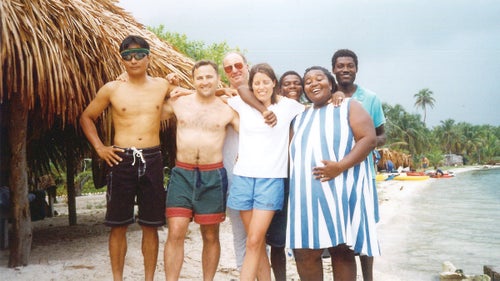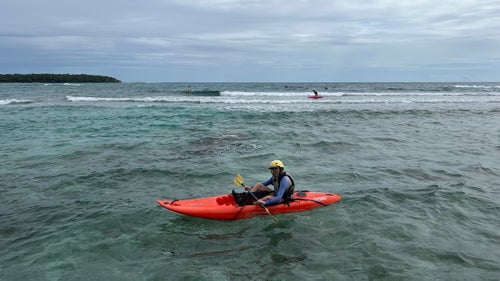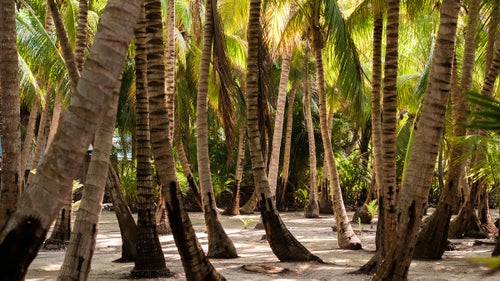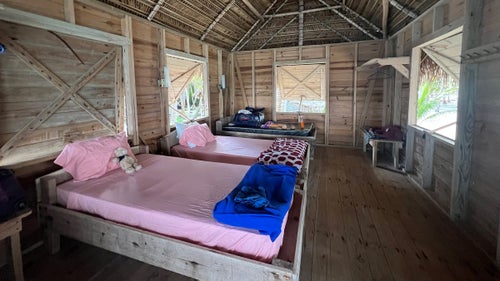Time Has Stood Still on This Belize Island. How Wonderful.
After 25 years, writer Katie Arnold returned to Long Caye, a slice of paradise that the adventure travel boom forgot
Heading out the door? Read this article on the Outside app available now on iOS devices for members! Download the app.
It’s a bright, windy December day, and we’re on a boat barreling east from Belize City. For nearly three hours, the Caribbean has been choppy and rough, until the water abruptly goes still. The sudden calm can only mean we’re inside the reef. We’re almost there.
I poke my head through a porthole in the ceiling. Ahead of us on the blue horizon, a small island is growing bigger and more distinct. Longer than it is wide, it appears to consist of palm trees, a narrow crescent of yellow-sand beach, and, at the north end, a cluster of wooden, thatch-roofed cabanas. A small dock on the lee side awaits. Figures emerge, arms raised in greeting.
Belowdecks, someone’s kids are shrieking like lunatics.
I blink, letting my eyes adjust to what I’m seeing, waiting for my mind to catch up. Am I here or there? Is it then or now? What I’m seeing makes complete sense, and also it doesn’t. I’ve gone across the sea and back in time.







